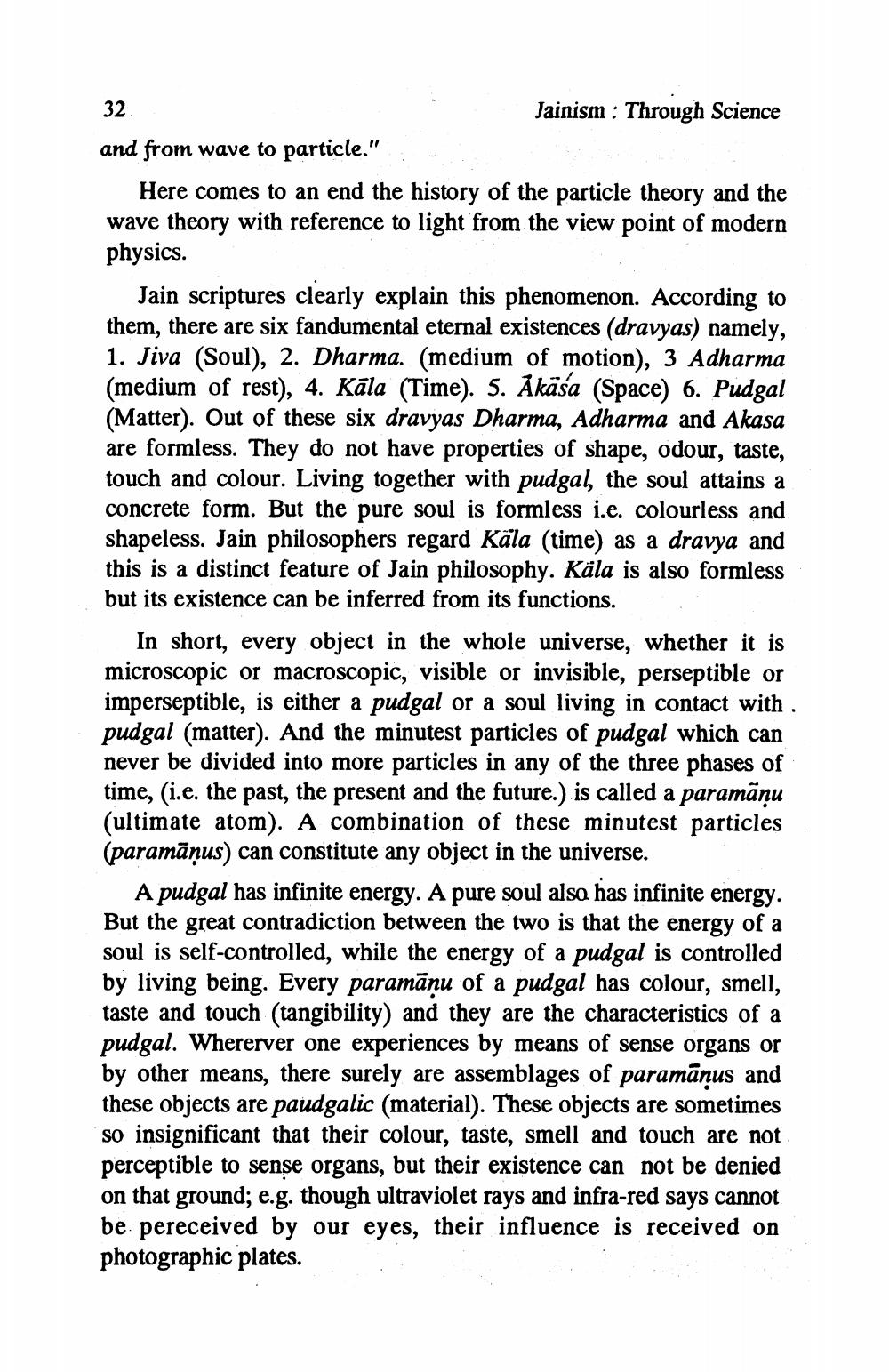________________
32
Jainism : Through Science and from wave to particle."
Here comes to an end the history of the particle theory and the wave theory with reference to light from the view point of modern physics.
Jain scriptures clearly explain this phenomenon. According to them, there are six fandumental eternal existences (dravyas) namely, 1. Jiva (Soul), 2. Dharma. (medium of motion), 3 Adharma (medium of rest), 4. Kāla (Time). 5. Akäsa (Space) 6. Pudgal (Matter). Out of these six dravyas Dharma, Adharma and Akasa are formless. They do not have properties of shape, odour, taste, touch and colour. Living together with pudgal, the soul attains a concrete form. But the pure soul is formless i.e. colourless and shapeless. Jain philosophers regard Kala (time) as a dravya and this is a distinct feature of Jain philosophy. Käla is also formless but its existence can be inferred from its functions.
In short, every object in the whole universe, whether it is microscopic or macroscopic, visible or invisible, perseptible or imperseptible, is either a pudgal or a soul living in contact with . pudgal (matter). And the minutest particles of pudgal which can never be divided into more particles in any of the three phases of time, (i.e. the past, the present and the future.) is called a paramāņu (ultimate atom). A combination of these minutest particles (paramāņus) can constitute any object in the universe.
A pudgal has infinite energy. A pure soul also has infinite energy. But the great contradiction between the two is that the energy of a soul is self-controlled, while the energy of a pudgal is controlled by living being. Every paramāņu of a pudgal has colour, smell, taste and touch (tangibility) and they are the characteristics of a pudgal. Whererver one experiences by means of sense organs or by other means, there surely are assemblages of paramanus and these objects are paudgalic (material). These objects are sometimes so insignificant that their colour, taste, smell and touch are not perceptible to sense organs, but their existence can not be denied on that ground; e.g. though ultraviolet rays and infra-red says cannot be pereceived by our eyes, their influence is received on photographic plates.




